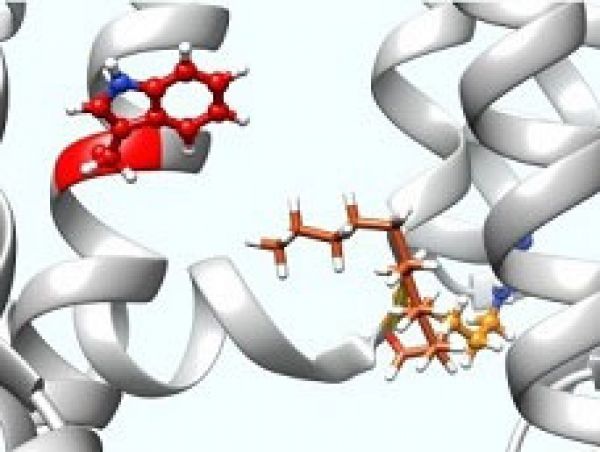Herbs, including cilantro, have a long history of use as folk medicine anticonvulsants. Until now, many of the underlying mechanisms of how the herbs worked remained unknown.
In a new study, researchers uncovered the molecular action that enables cilantro to effectively delay certain seizures common in epilepsy and other diseases.
The study, published in FASEB Journal, explains the molecular action of cilantro (Coriandrum sativum) as a highly potent KCNQ channel activator. This new understanding may lead to improvements in therapeutics and the development of more efficacious drugs.
“We discovered that cilantro, which has been used as a traditional anticonvulsant medicine, activates a class of potassium channels in the brain to reduce seizure activity,” said Geoff Abbott, Ph.D., professor of physiology and biophysics at the UC Irvine School of Medicine and principal investigator on the study.
Read more at: University of California
Shown is a computer simulation of E-2-dodecenal (orange) docking in its predicted binding site on the neuronal KCNQ potassium channel. (Photo C


